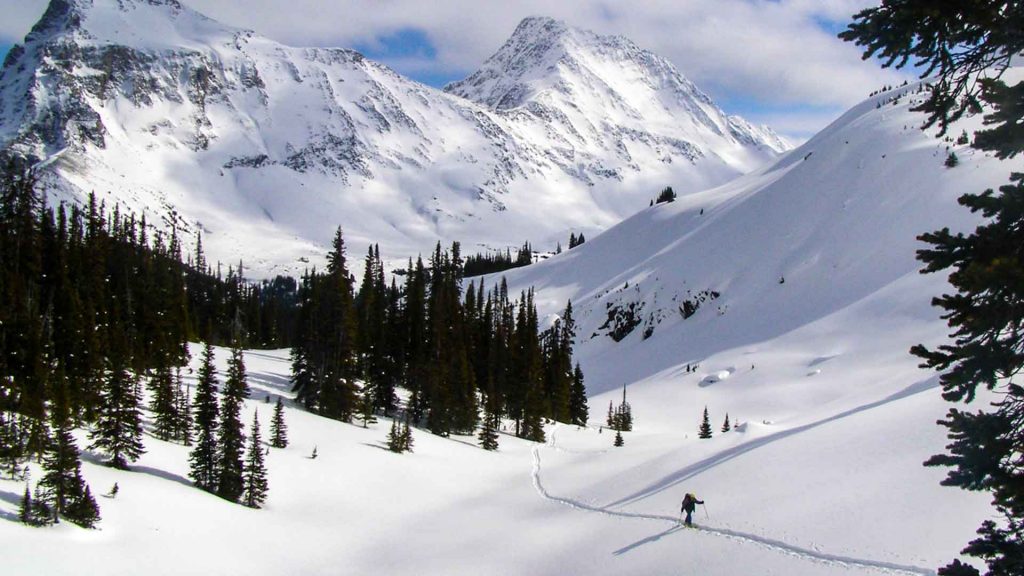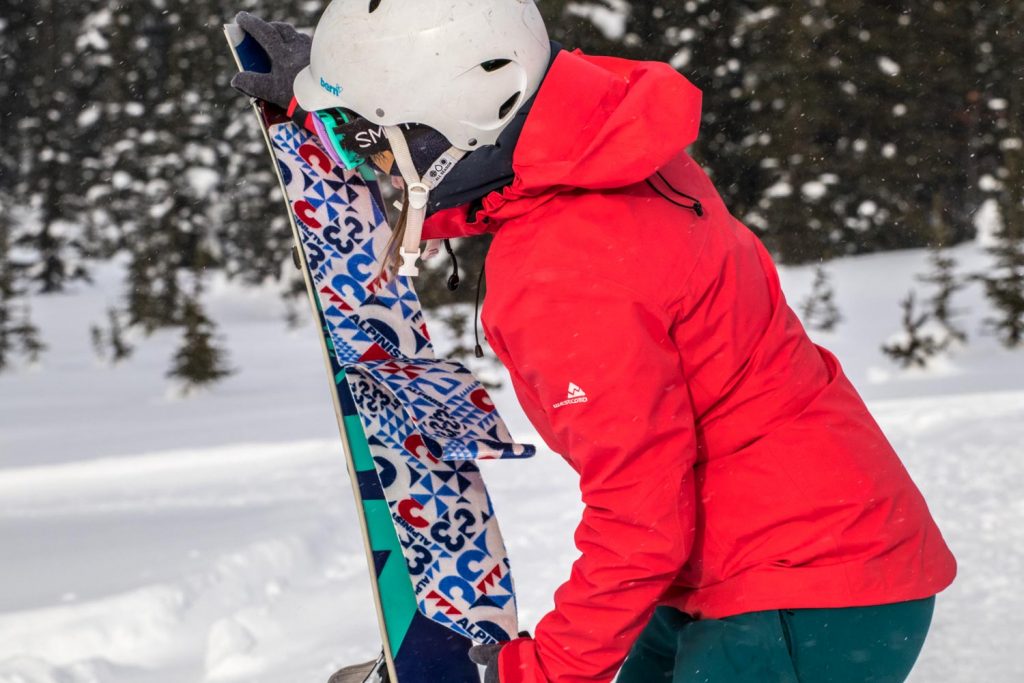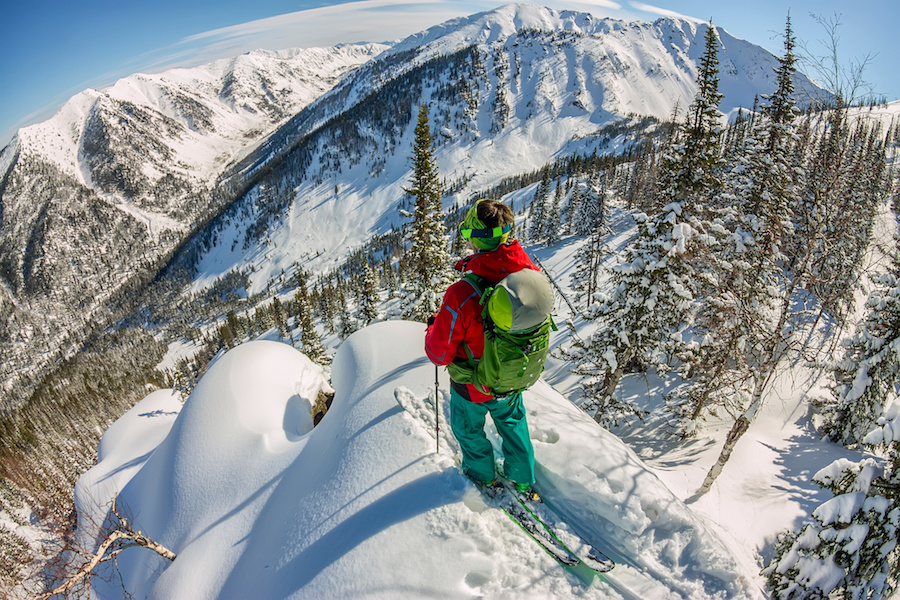Backcountry skiing has become so popular it’s easy to forget how young it is as a sport. From the first days of going downhill, to the uphill revolution, our sport has expanded by leaps and bounds, but how did we get here? I’ve taken a look back at the key milestones in the evolution of skiing, and tackled the constant struggle of – just because we can do it, should we?

A ways back in history.
- Skis were long, wooden, heavy, with cute little pointy things on the tips (no idea what they were for)
- Boots were leather, flexible, no support
- Bindings had no release; boot toes were in fixed “bear traps”, heels were loose.
- Going uphill was by herringbone steps, or side steps – slow and hard
- Safety equipment was “last sighting”, heavy shovels, long fixed probes – if any
- Snowpack and avalanche assessment was the classic model: instinct and experience.
Then along came waxes.
- More slide going down and grip going up.
- So ended herring bone and side steps.
- Now skiers could point uphill – steeper uphill – and go.
Many at that time said: “if you need wax to get there, maybe you shouldn’t be going there!”.
Hmmm.
Then along came skins.
- Actually made from seal “skin”
- Strapped on – leading to inevitable rips and breakage
- Better than wax for uphill – even steeper uphill
- Take them off for downhill – no wrong choice wax slowing you down.
Many at that time said: “if you need skins to get there, maybe you shouldn’t be going there!”.
Hmmm.

Then along came safety equipment.
- The first transceivers – the original “Piep”
- Collapsible probes
- Lighter, stronger shovels
- Avalungs
- The first airbags
- Communications by VHF radio and satellite based locating and messaging
Many at that time said: “if you need all that, maybe you shouldn’t be going there!”.
Hmmm.
Then along came snowpack and avalanche analysis.
- This complemented the classic instinct and experience analysis
Many at that time said: “if you need all that, maybe you shouldn’t be going there!”.
Hmmm.
And now today.
- Skis and split snowboards that are lighter, stronger, and easier to turn
- Bindings that are release, lighter, and stronger
- Binding heel risers – big risers for big steep uphill
- Skins that are lighter, stick on, capable of even steeper uphill
- Boots that are lighter, supportive, with interchangeable “walk-mode” & “ski-mode”
- Constantly improving safety equipment
- Constantly improving snowpack and avalanche analysis, and web based real time sharing of information
So what should we say now? For sure it is not to say: “don’t go there”.
If we had stopped venturing further at the advent of wax we would never be able to experience the backcountry the way we do today. It’s not a simple matter of drawing a hard line of what is pushing the boundaries too far in backcountry skiing. We need to instead use the new knowledge, skills and equipment to make informed decisions for what is right for that day, or that run.

That’s where our experienced guides come in. They’re experts on our local terrain, the latest snow conditions, and are here to give you the best, and safest on snow experience. In advance of our season opening on December 30th we’ve been getting tons of new snow, and those fresh turns are waiting for you. Start planning your visit today.
Next steps?
- More Blogs
- Explore Website
- Contact us by email info@cacltd.ca
- Contact us by phone 250 835 4516
- Check Availability
- Book Now!
